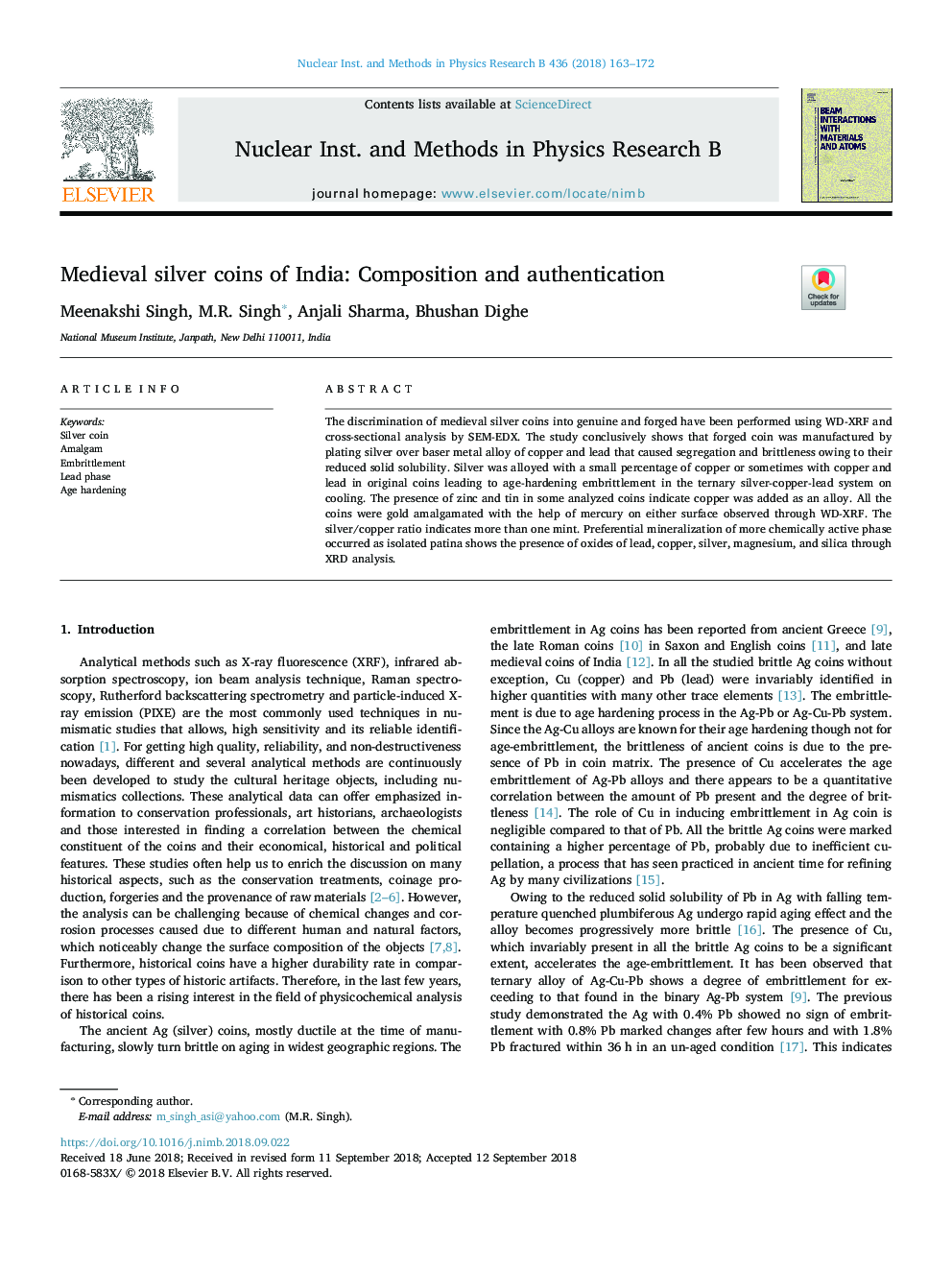| Article ID | Journal | Published Year | Pages | File Type |
|---|---|---|---|---|
| 10675521 | Nuclear Instruments and Methods in Physics Research Section B: Beam Interactions with Materials and Atoms | 2018 | 10 Pages |
Abstract
The discrimination of medieval silver coins into genuine and forged have been performed using WD-XRF and cross-sectional analysis by SEM-EDX. The study conclusively shows that forged coin was manufactured by plating silver over baser metal alloy of copper and lead that caused segregation and brittleness owing to their reduced solid solubility. Silver was alloyed with a small percentage of copper or sometimes with copper and lead in original coins leading to age-hardening embrittlement in the ternary silver-copper-lead system on cooling. The presence of zinc and tin in some analyzed coins indicate copper was added as an alloy. All the coins were gold amalgamated with the help of mercury on either surface observed through WD-XRF. The silver/copper ratio indicates more than one mint. Preferential mineralization of more chemically active phase occurred as isolated patina shows the presence of oxides of lead, copper, silver, magnesium, and silica through XRD analysis.
Keywords
Related Topics
Physical Sciences and Engineering
Materials Science
Surfaces, Coatings and Films
Authors
Meenakshi Singh, M.R. Singh, Anjali Sharma, Bhushan Dighe,
